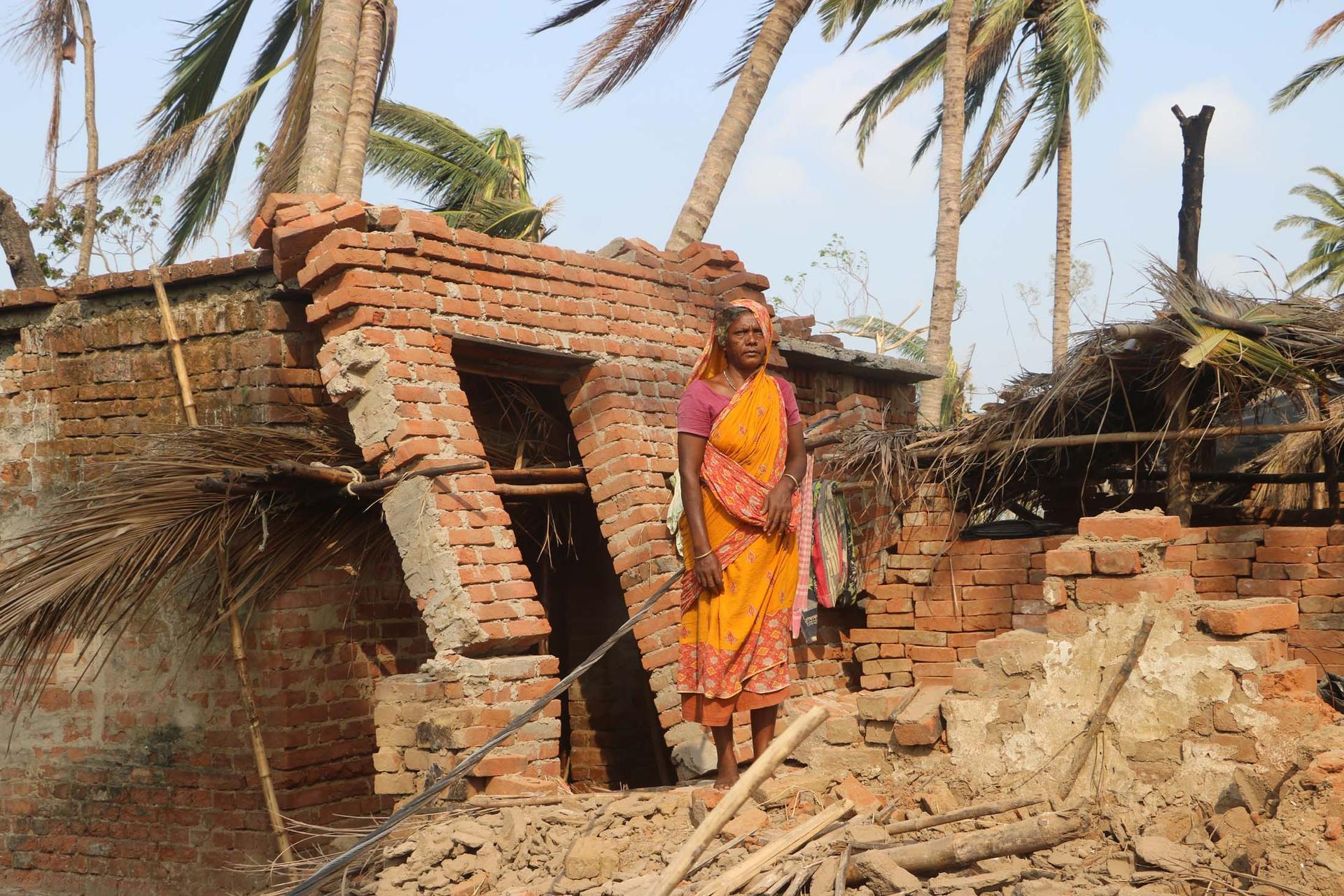MUDULISAHI, India — Sabi Swati, stood on the ruins of her brick house, which had been ravaged by powerful cyclone Fani in early May, asking, “What will I do?”
“I am awaiting support to repair my house. I cannot stay in the palm-shed I am living in now when the monsoon comes (in mid-June),” Swati told Catholic News Service.
Nearby, Catholic Relief Service workers conducted a survey of damaged properties and the needs of hundreds of people who were evacuated from the remote village in Odisha state and returned home to find massive destruction.
Swati was not alone in her bewilderment. Dozens of people continued to wonder about their future a month after the storm as aid relief agencies worked to distribute emergency assistance and hygiene supplies.
Nearly all of the 120-plus houses in Mudulisahi suffered extensive damage from the storm that packed winds of 160 miles per hour when it walloped coastal and inland areas of eastern Odisha state May 3. Authorities said 70 people died and more than 500,000 families were affected by the cyclone.
Rows of roofless and severely damaged houses surrounded by stumps of headless and twisted coconut trees bear witness to Fani’s devastation throughout the region. Even a concrete roof in the village of Purushottam Ballabha, where CRS had distributed relief supplies, had sustained severe damage.
Because of timely and precise forecasts, the government was able to evacuate nearly 1.5 million people to inland communities ahead of the storm, Bhishnupada Sethi, special relief commissioner of Odisha, said, acknowledging that the swift action likely saved dozens if not hundreds of lives.
Sethi said the storm caused more than $1.7 billion in damage as assessments continued at the end of May.
“Over two lakh (200,000) families have been severely affected with their roofs blown away,” Sethi told CNS June 3.
“Along with restoring electricity and other amenities, our immediate target is to reach assistance to these families before the monsoon breaks in (mid-June),” Sethi said.
“We are reaching relief and cash assistance to over 100,000 families. Many (international) relief organizations are carrying out making meaningful relief and rehabilitation work. The government is working in coordination with them,” he added.
Kirtimayi Mishra, head of the CRS India office, said that 29 international charities have established an interagency group to respond to the needs of storm victims. Representatives meet at least twice a week to assess priorities and coordinate relief work.
While the government swiftly distributed rice in 110-pound sacks, cash and tarpaulins to many of the affected families soon after the storm, church charities fanned out to remote villages with additional emergency relief supplies.
“We reached out to more than 8,800 households with immediate lifesaving assistance with emergency shelter material kits of tarpaulin, plastic mats, nylon rope, insecticide treated mosquito nets, and solar lamps,” Mishra said.
The need for temporary shelters remains large. “Everyone is aware of the need to reach out to the homeless families before the monsoon,” she said.
“The (interagency) group has already planned to take up 60,000 to 70,000 families in remote areas for reach relief,” she added. “CRS is chalking out its temporary shelter target.”
In Benpanjuri village, Caritas India workers met Sapura Bibi, whose home was roofless with the sun blazing into its interior. Bibi posed the same question heard countless times since the storm: “How can I live in this house?”
“Luckily, I had taken shelter with my children in the (government) cyclone shelter. Prone to cyclones frequently due to its curved coastline in the Bat of Bengal, Odisha has built thousands of cyclone shelters,” she said.
Anjan Bag, technical manager for humanitarian response with Caritas India, said the evacuation saved lives because Fani was more powerful and destructive than a super cyclone in 1999 that left more than 10,000 dead.
“The country realized the massive devastation only later. When I rushed to Odisha, there was neither electricity nor water. We had to sleep in the open under mosquito nets to coordinate the relief work,” Bag told CNS June 5.
As of June 3, Caritas India had distributed emergency shelter material to 5,537 households in 88 villages in addition to food supplies to more than 1,000 families, he said.
While the Caritas network has already donated nearly $255,000, Bag said, several other agencies have come forward to support a planned housing rehabilitation program. Homeowners will be trained in home reconstruction as well as small-business development.
Crux is dedicated to smart, wired and independent reporting on the Vatican and worldwide Catholic Church. That kind of reporting doesn’t come cheap, and we need your support. You can help Crux by giving a small amount monthly, or with a onetime gift. Please remember, Crux is a for-profit organization, so contributions are not tax-deductible.















